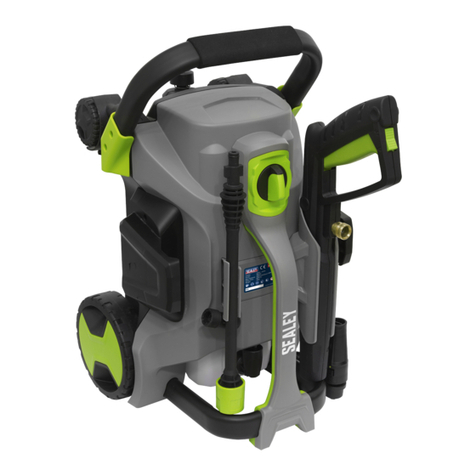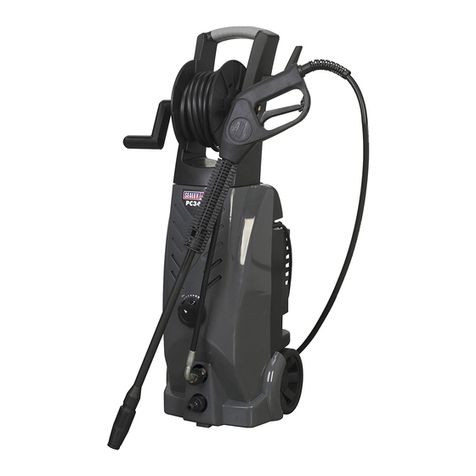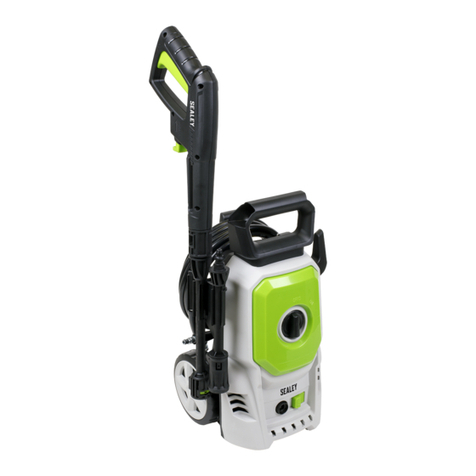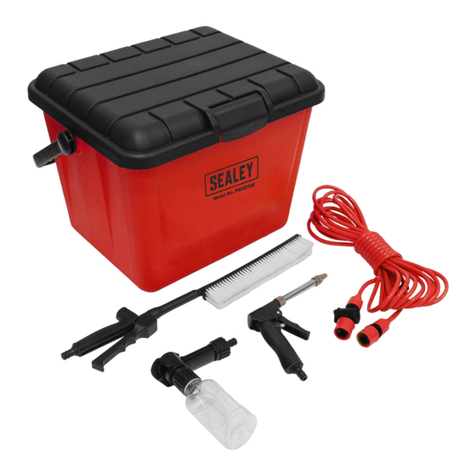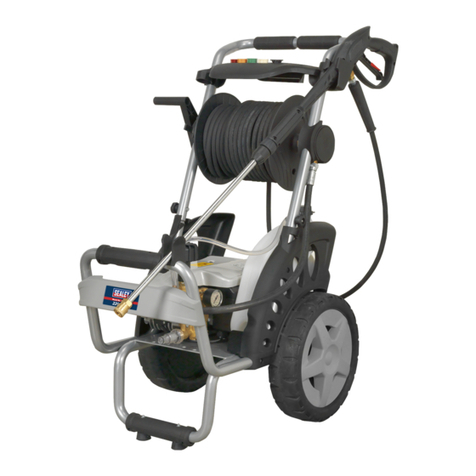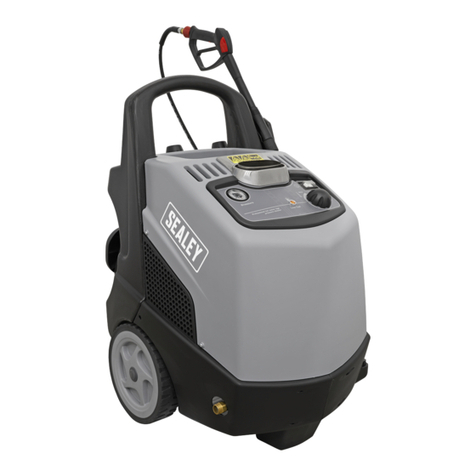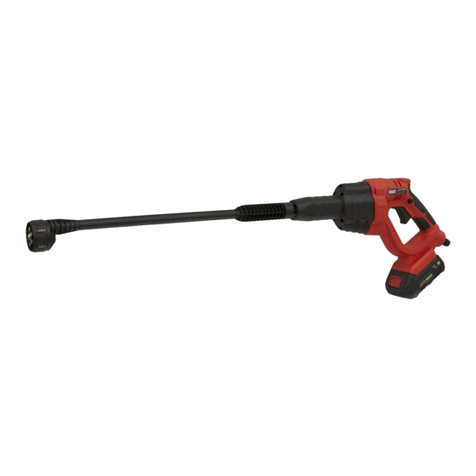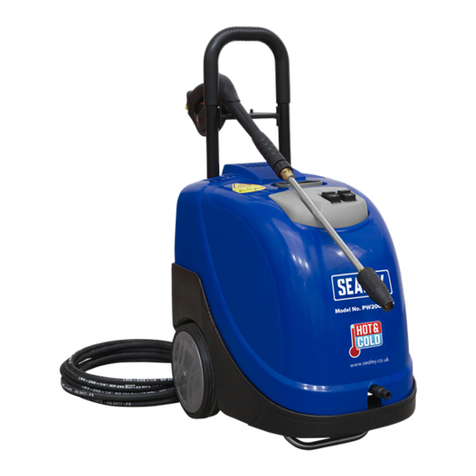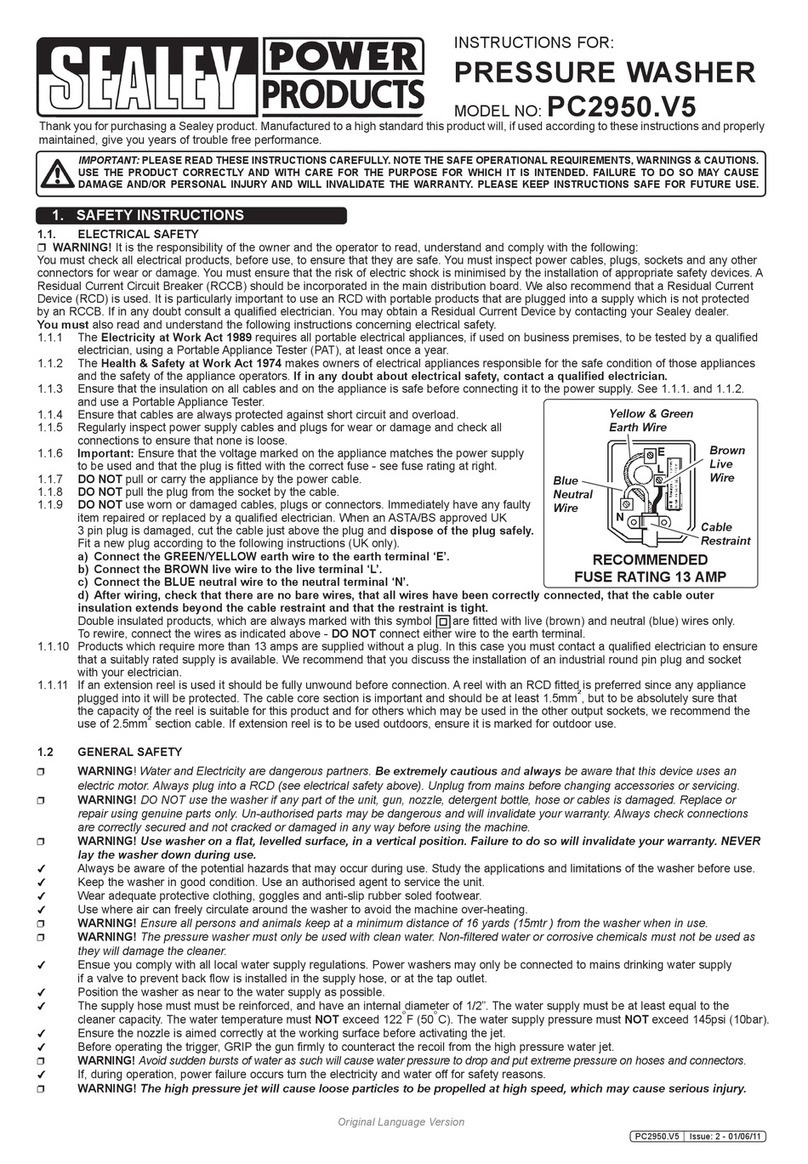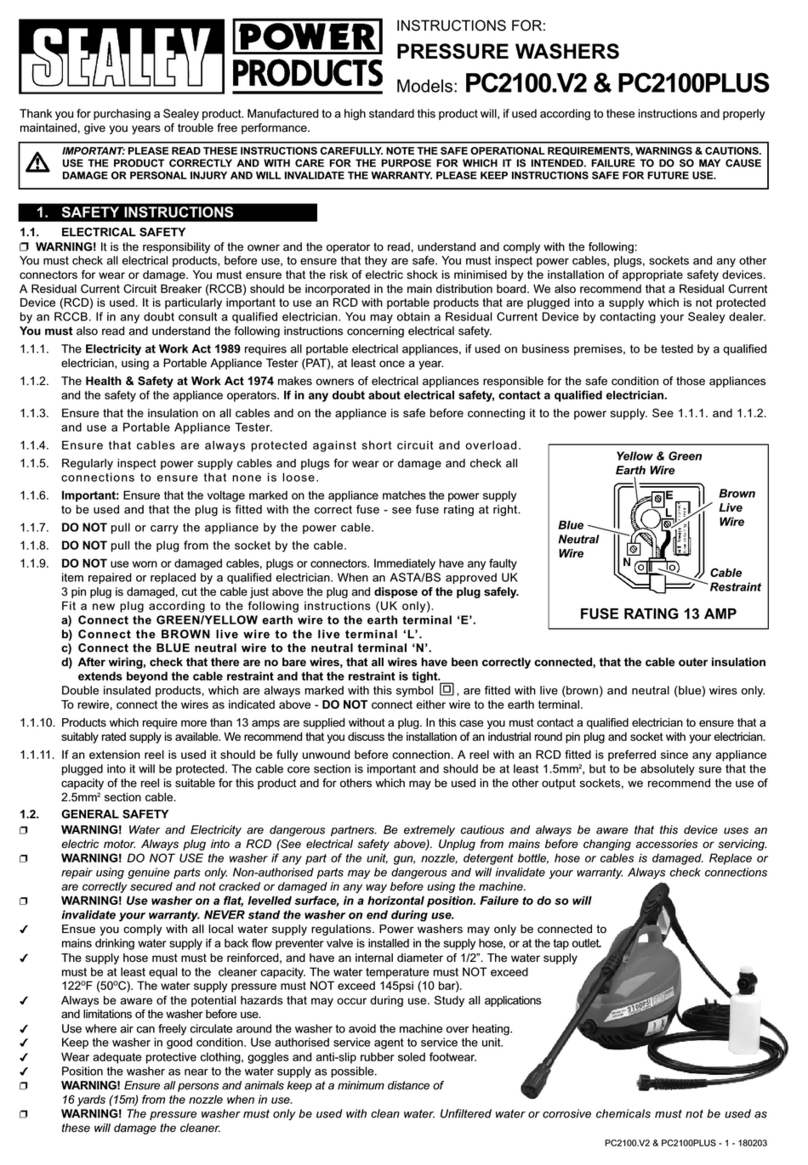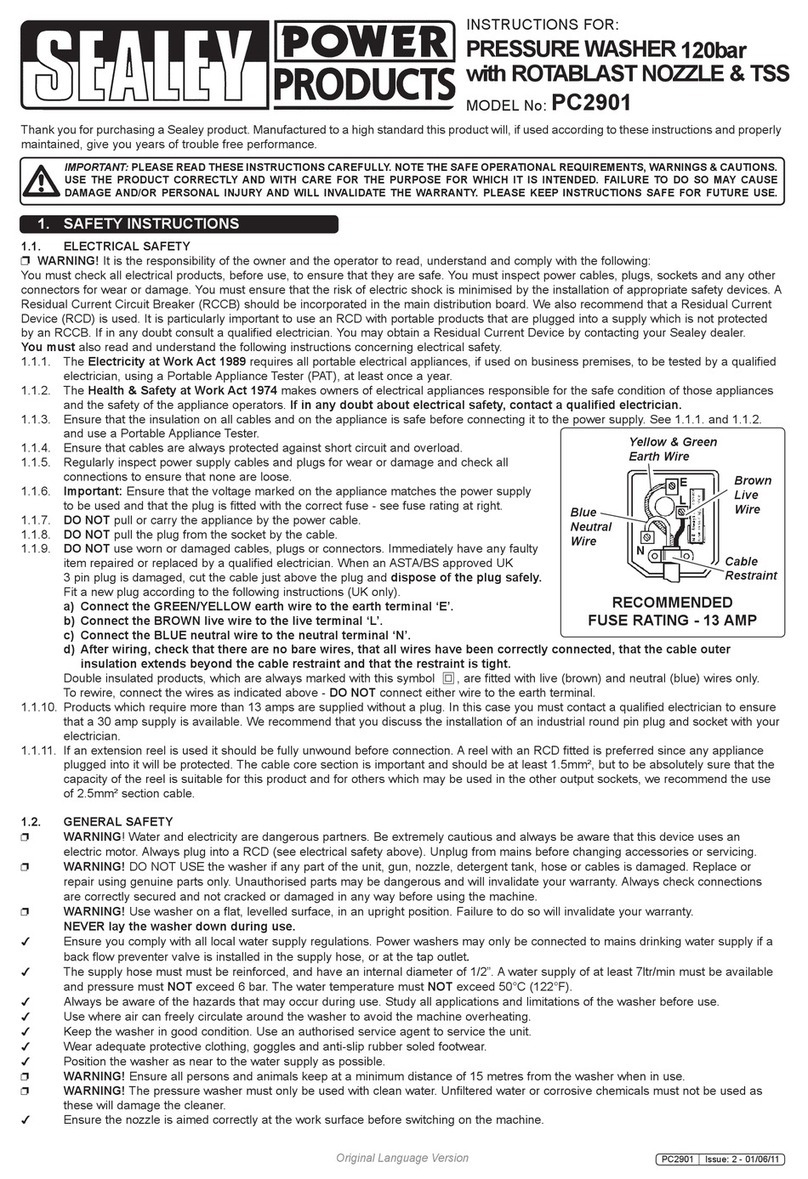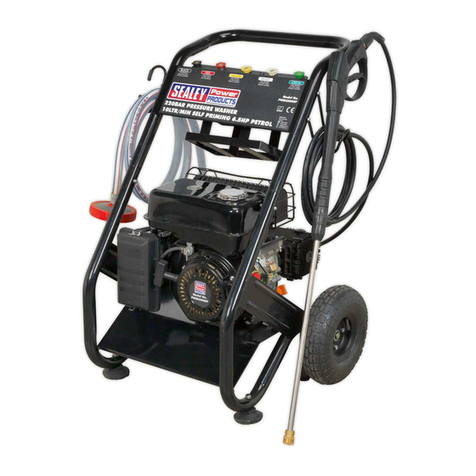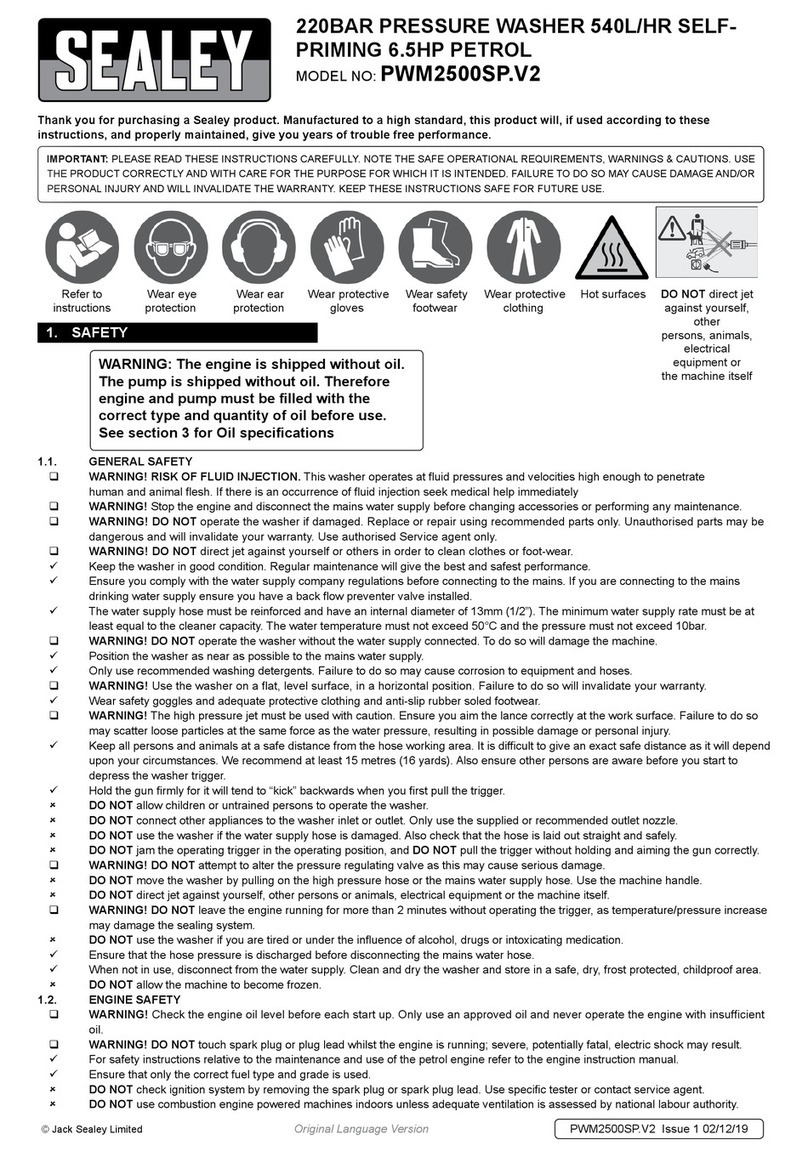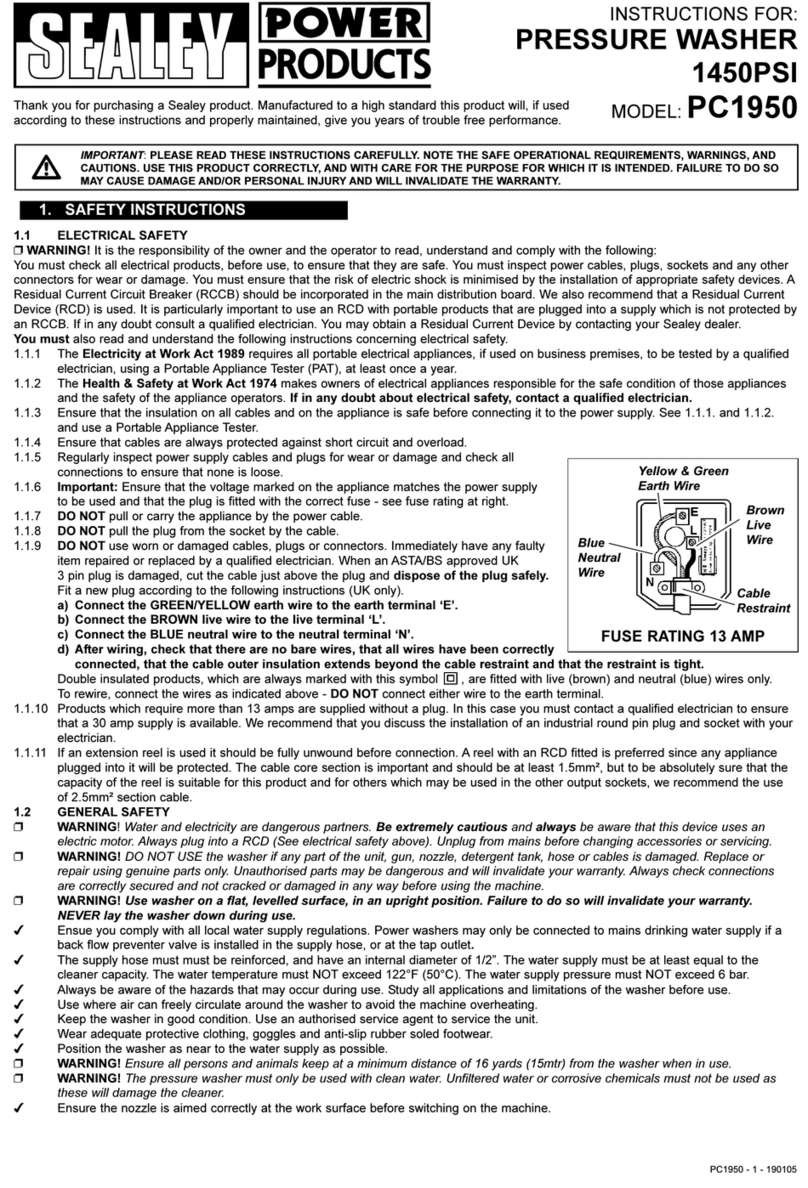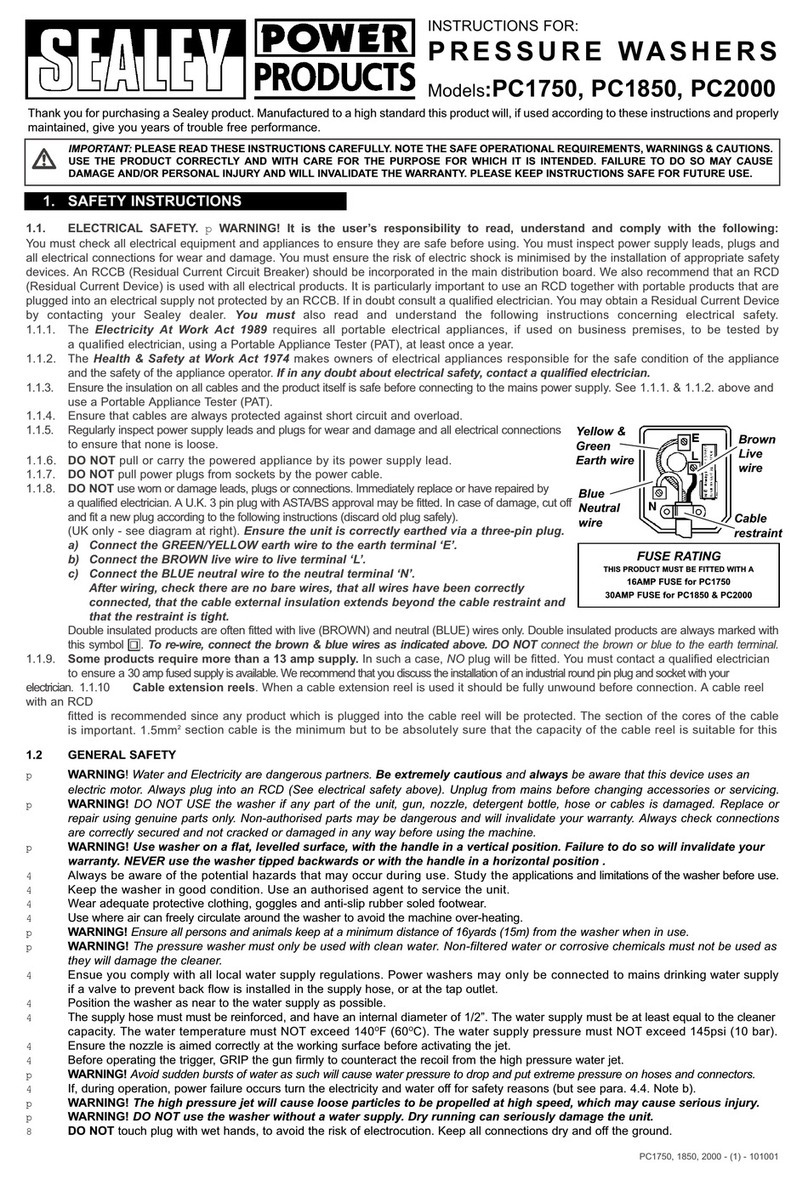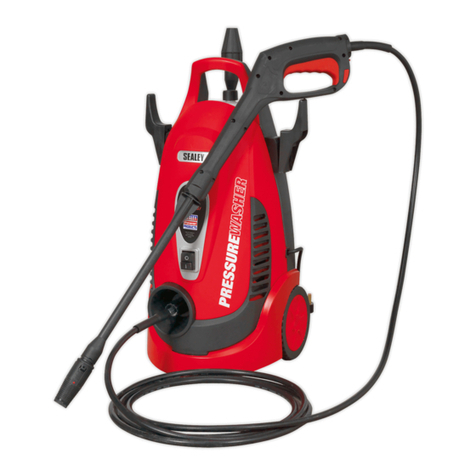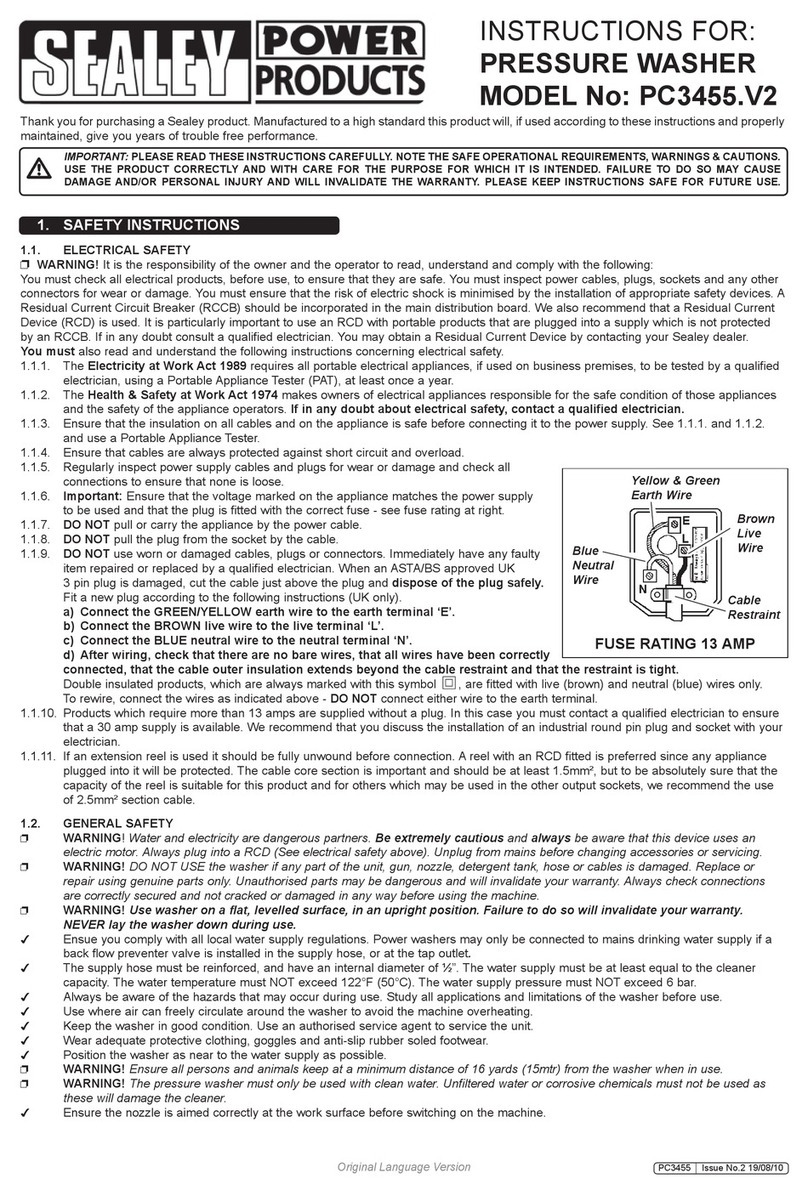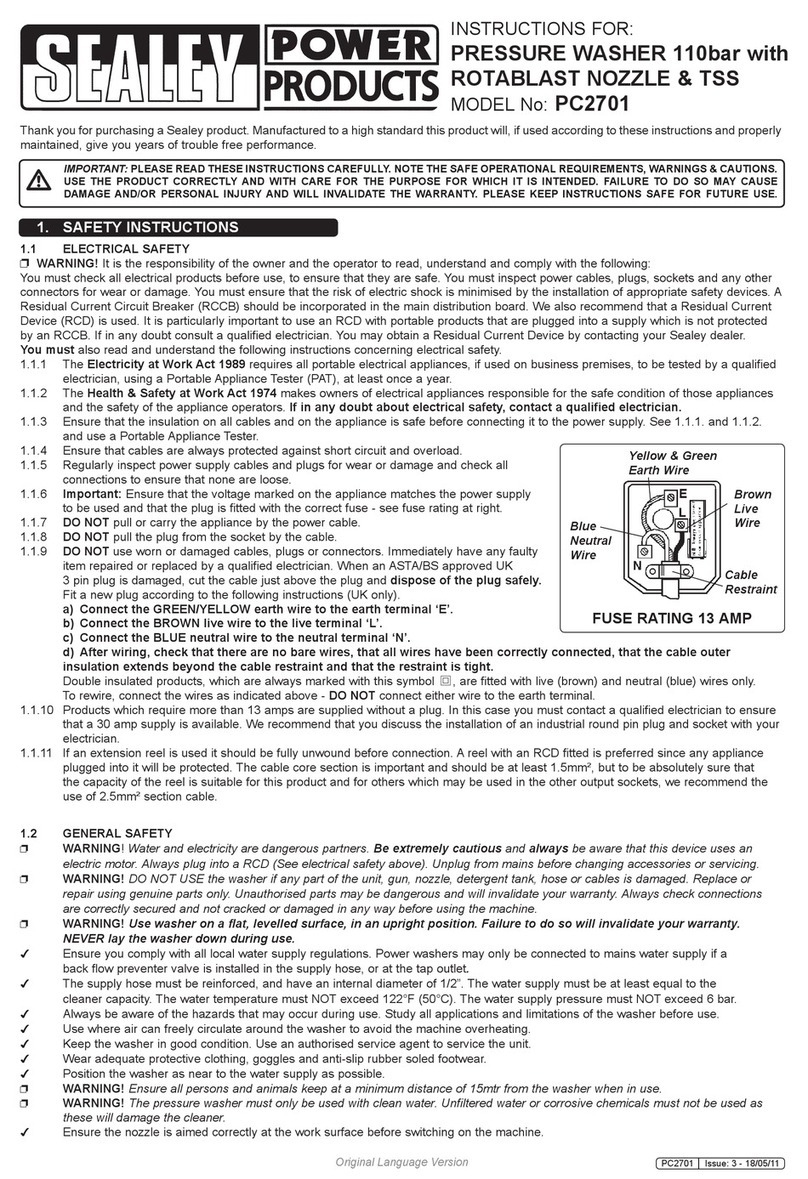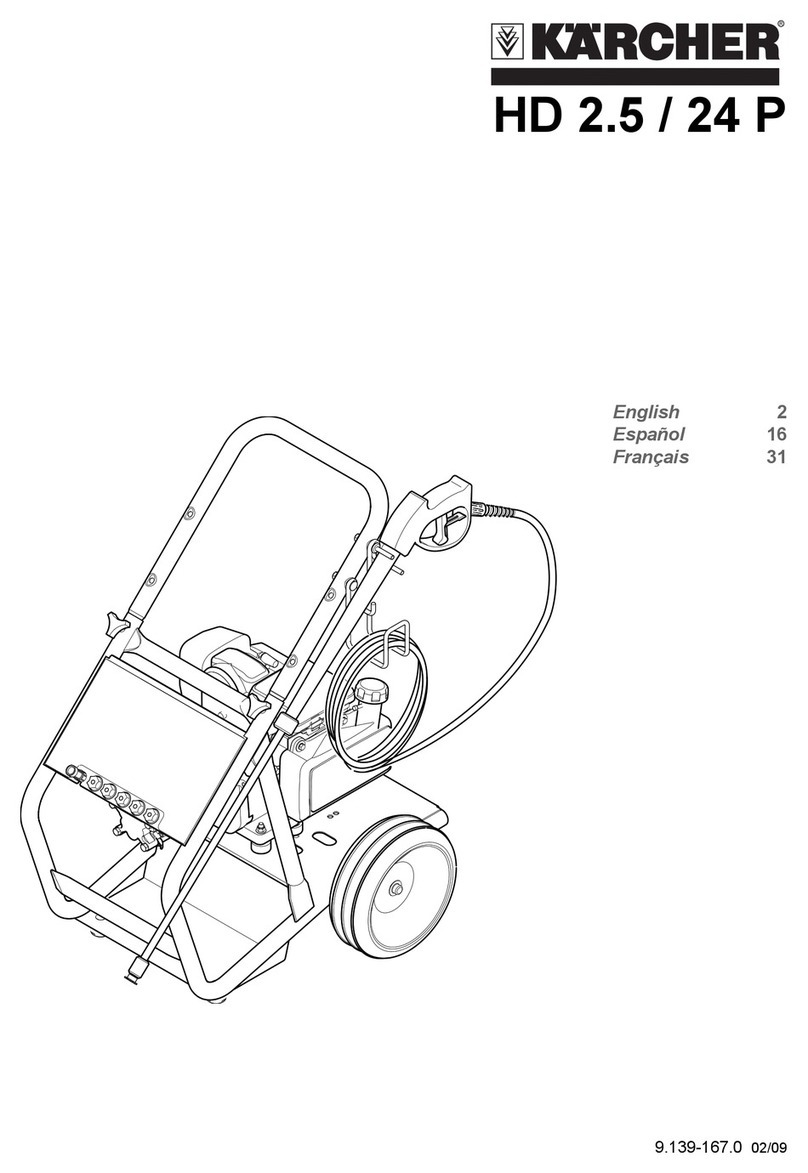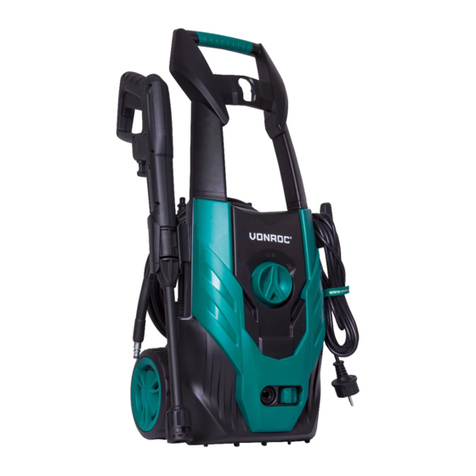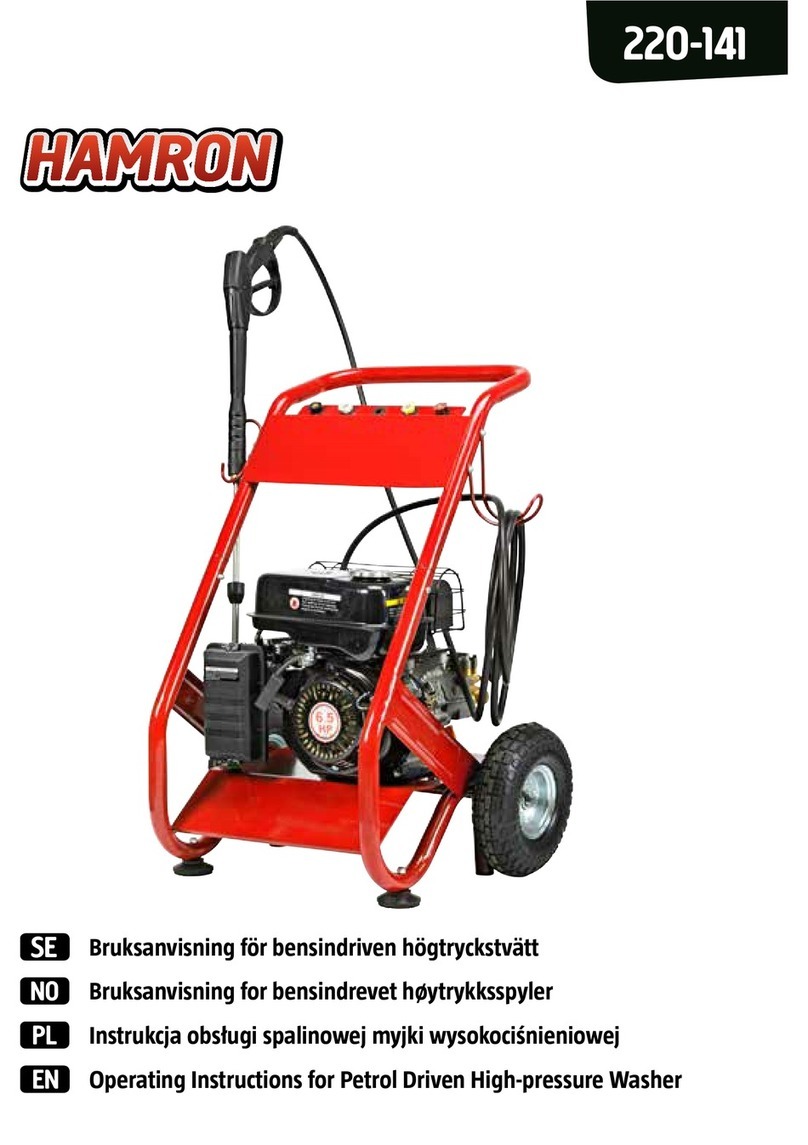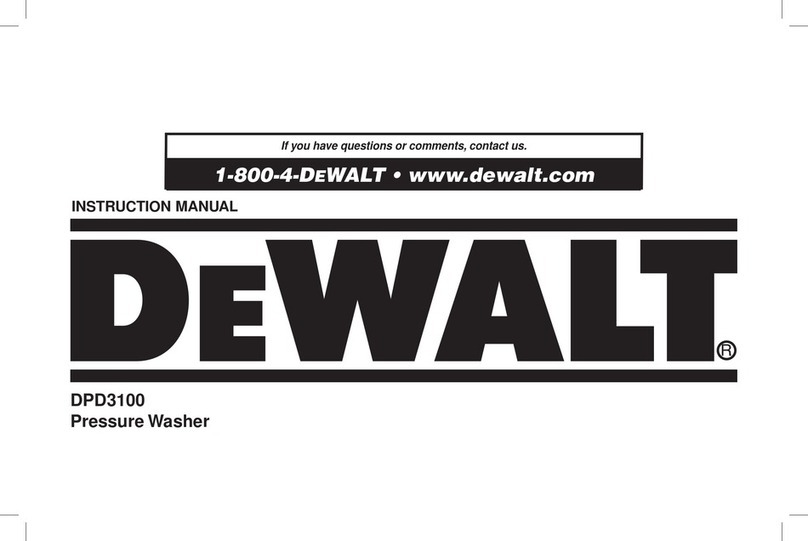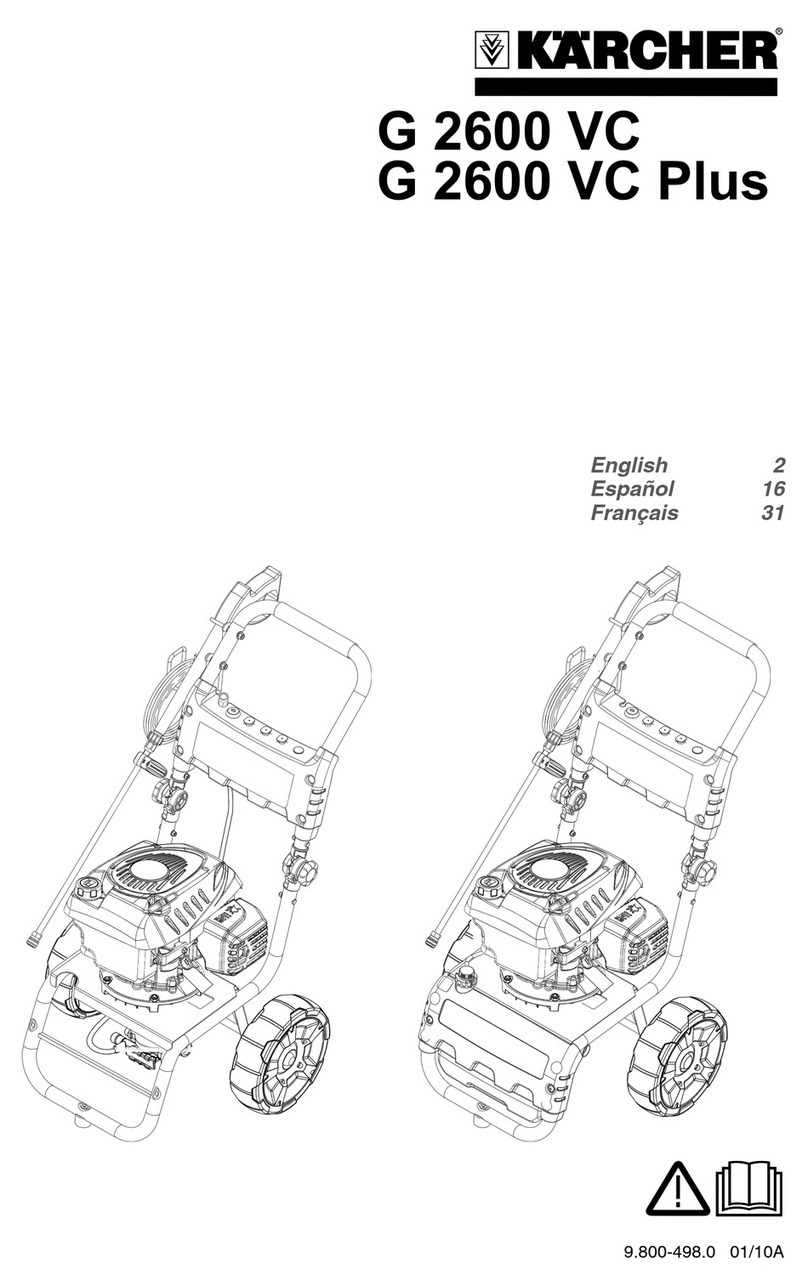6. MAINTENANCE (WASHER)
5. OPERATION
4. SAFETY FEATURES
WARNING! Ensure you read, understand and apply
Section 1 safety instructions.
WARNING! Dry running can seriously damage the unit.
WARNING! DO NOT leave motor running for more than
2 minutes without operating the trigger, as
temperature/pressure increase may damage sealing system.
5.1. STARTING PROCEDURE.
5.1.1 Check engine oil level before each use.
5.1.2 Check that the mains water feed hose is laid straight, and
then fully open the water tap. Check to ensure there are no
leaks from hoses or connections.
5.1.3 Place the detergent input tube into the detergent container
(Fig.2) Ensure that the filter goes to the bottom of the
container.
5.1.4 Release gun trigger safety catch and depress trigger to allow
any air left in the system to escape, hold for 10 seconds and
release.
5.1.5 Switch the engine switch to the ON position ( press left hand
side of switch with “ I “ symbol). See fig.6.
5.1.6 Turn the fuel tap clockwise to the ON position. See fig.6.
5.1.7 If starting the engine from cold move the choke lever fully to
the right. See fig.6.
5.1.8 To start the engine give a steady pull on the starting handle.
(The engine will be a little easier to start if the trigger is
pressed during starting. This must be done by a second
person who can control the initial kickback as the water is
expelled).
5.1.9 As the engine warms up move the choke lever left into the
‘run’ position.
5.2. NOZZLE SPRAY ADJUSTING (FIG 6).
Adjust the nozzle pressure and spray pattern as described in
section 3.3.
CAUTIONS!
a) Avoid sudden bursts of water as this will cause the water
pressure to drop and put extreme pressure on the hoses
and connections.
b) If another person is using water from the same supply as
the washer, the water pressure will drop and the washer will
not operate correctly. Switch the engine off immediately and
wait until the pressure is restored.
5.3. CLEANING
5.3.1 Push nozzle forward - LOW PRESSURE - and rotate to fan jet.
Only apply detergent at the low pressure rate.
5.3.2 Depress the trigger to apply the detergent to the dry surface
of the item which is to be cleaned. Vertical surfaces must be
cleaned from the bottom upwards.
5.3.3 When detergent application is complete remove the syphon
tube from the detergent container and place it in a container
of clean water. Run the washer at low pressure to purge the
gun of detergent.
5.3.4 Leave the detergent to act for 1-2 minutes, but do not allow
the surface to dry.
5.3.5 Pull nozzle back - HIGH PRESSURE - and use fan or pencil
jet for washing.
5.3.6 Hold nozzle firmly at least 30cm (12”) from the surface and
commence washing with high pressure clean water. Work
from the bottom upwards, and avoid the water running on to
unwashed surfaces.
5.4 SHUT DOWN PROCEDURE.
5.4.1 When you have finished washing, turn off the engine switch
and close the fuel tap. Turn off the mains water supply.
5.4.2 Discharge residual pressure from the washer by pressing the
trigger until no more water comes out of the nozzle.
5.4.3 Engage the trigger safety catch, wipe the washer and store in
a dry, safe, childproof area.
4.1 THERMAL RELIEF VALVE
4.1.1 A thermal relief valve is fitted to protect the machine
from overheating if the gun remains closed for an
extended period of time or if the nozzle becomes
blocked. To prolong the life of the washer every effort
should be made to avoid overheating. It is recommended that
if the unit is not to be used for two minutes or more it should
be switched off.
4.2 TRIGGER LOCK.
4.2.1 To prevent accidental starting of the pressure washer the trigger
can be locked as shown in Fig.3A by hinging out the lever built
into the back of the trigger and pressing it until it snaps into an
indent in the handle. To release the locking lever flex the trigger
handle forwards and flip the lever out of the indent and fold it
back into the trigger. The trigger should be locked whenever the
washer is not in use.
4.3 LOW OIL SHUTDOWN.
4.3.1 The engine on this washer is equipped with a low oil shutdown
feature which stops the engine if the oil drops below the
specified level. Should the engine cut out, first check that it is
standing on a level surface. If the oil level is still low top it up as
described in Section 7.2.
fig.6
Maintenance should only be performed with the engine turned
off and the unit disconnected from the mains water supply.
6.1 Clean gun nozzle with a suitable rigid piece of wire (fig 7).
Detach lance from gun, remove any dirt from the nozzle head
and rinse with clean water. If this does not improve the flow
from the nozzle it should be replaced.
6.2 Check and clean the water inlet filter every 50 operating
hours. Remove the plastic connector from the water inlet on
the pump and remove the internal filter and clean it. If the
filter is damaged in any way it should be replaced.
6.3 Check and clean the detergent filter at the end of the
detergent input tube on a regular basis.
6.4 WINTER STORAGE: Fill the pump with an anti-freeze
mixture before storing in a frost free, safe, dry area for the
winter. Introduce the antifreeze by the following method.
6.4.1 Shut off the water supply and disconnect the supply hose.
Relieve pressure within the pump by squeezing the gun
trigger. Leave the high pressure hose connected.
6.4.2 Tip the unit on its side with the water inlet facing upwards and
insert a small funnel into the inlet. Pour in some antifreeze
mixture.
6.4.3 Disconnect the ignition lead from the spark plug.
6.4.4 Pull the recoil starter several times to circulate the antifreeze
throught the pump. Continue to add antifreeze and pull the
recoil until antifreeze is expelled when the trigger is pulled.
fig.7
Original Language Version PCM1300.V2 Issue: 1 - 08/06/10
